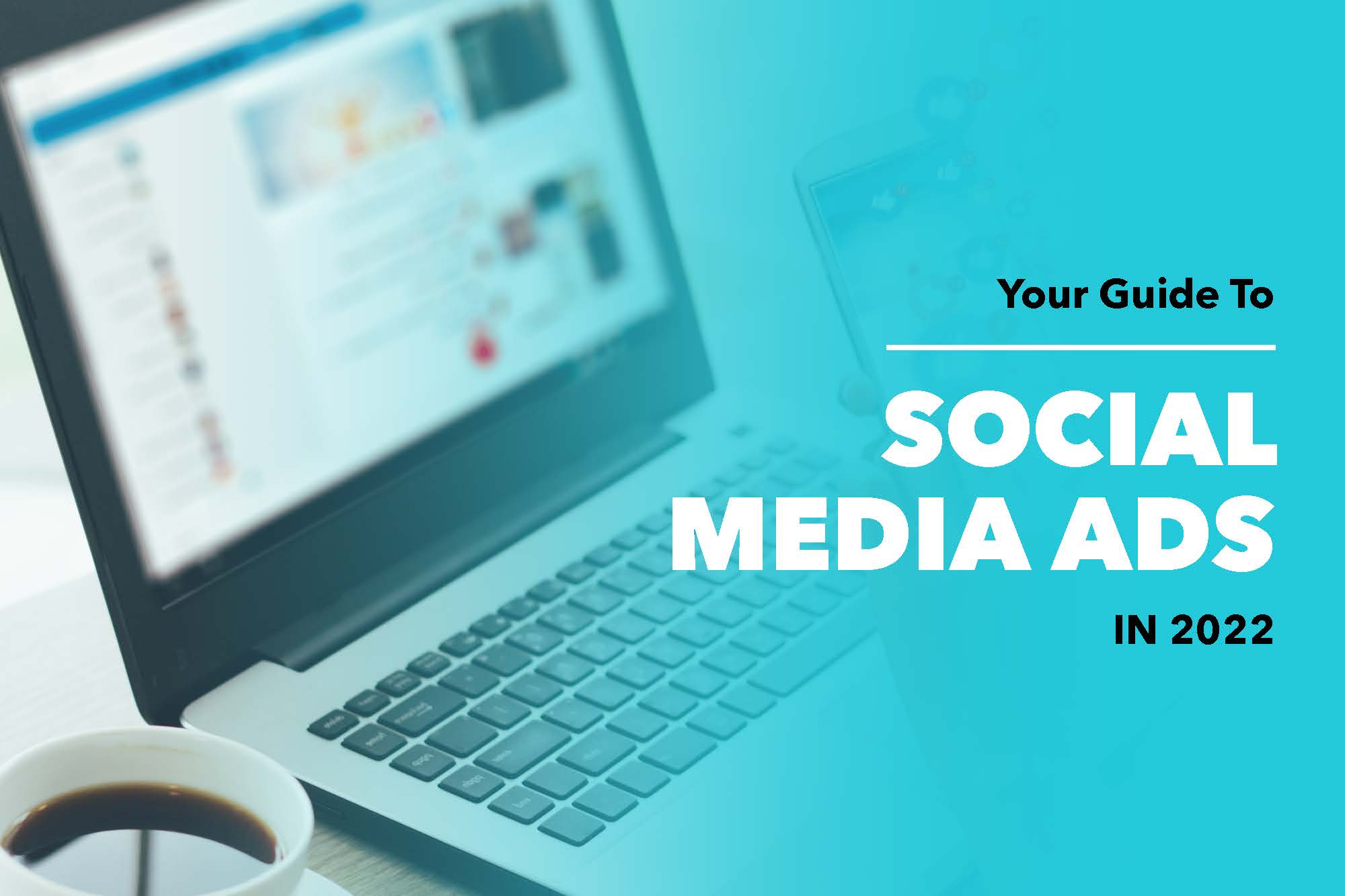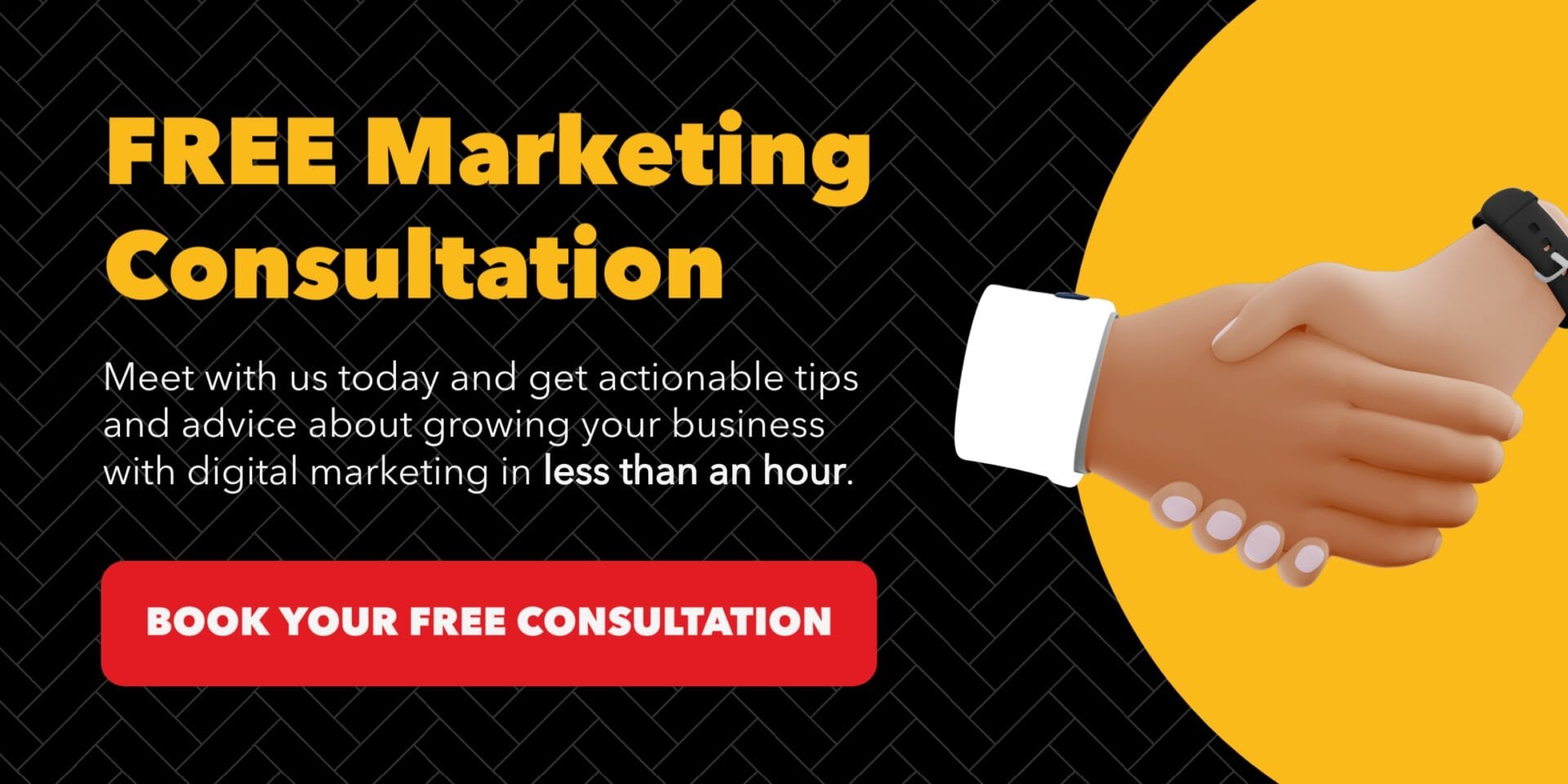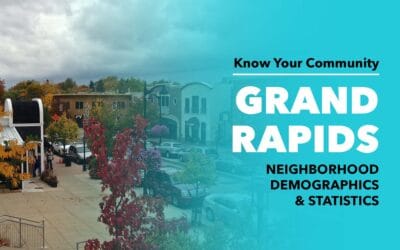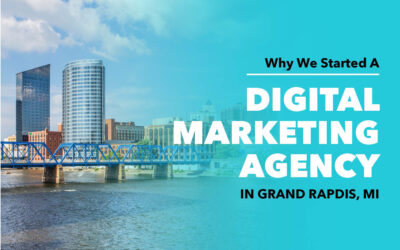If you’re a small business, you know how difficult it can be to keep up with digital marketing trends– but social media seems to be the thing that changes the most frequently.
It may seem like a strange thought, but now is the time to start planning for 2022 and beyond. There’s no question that there’s more competition than ever on each social media platform, and with each one rapidly changing, you have to keep a close watch on what’s working and what isn’t.
No matter your skill level, this guide is for you. We’ll be sure to include enough information for beginners to jump in and begin understanding advertising on social media, but we’ll also be including enough up-to-date information on each platform to add value to intermediate or advanced users as well.
There are many step-by-step guides on the granular details of how to advertise on these specific social media platforms (there are even some full courses). This isn’t that. This is the guide you need to figure out why you should choose one platform over another, and how you can build a solid strategy overall. Once you know what you’re doing and why, you’ll be much better off, and your marketing results will benefit.
It’s time to master your social media advertising, and in this guide, we’re going to give you a plethora of information about what your strategy should be in 2022.
Should You Pay For Social Media Advertising?

You might be thinking “Wait, social media is free. Why would I pay for it?” That’s a good question, but we promise you that there are definitely some strong benefits to paid social media.
Firstly, remember that it doesn’t have to be one or the other. A strong social media campaign will include a mix of your own organic posts as well as some paid posting as well. A good blend of the two will help you get stronger results overall.
One of the biggest reasons to pay for social media is because all but a few platforms strongly limit the number of people who will see your postings if you don’t pay. Have you ever wondered why your post only gets a few comments or likes? That’s because unless you pay, many of the social media platforms won’t show your post in people’s feeds. Some of the last holdouts that still give you organic reach are TikTok and LinkedIn. Beyond that, consider social media to largely be a “pay to play” game.
When you put money behind your posts on social media, what you’re essentially buying is guaranteed reach to a larger audience. This can be huge for your business. A recent study shows that almost 30% of people find new businesses or discover new products on social media. You want to be in that mix as more people use social media every day.
Another thing that paid advertising on social media allows you to do is directly target certain demographics. When you run a social media ad you get to choose who sees it based on things like geography, age, preferences, and more. This can be invaluable if you know the demographic you’re looking to target with your marketing. Organic reach doesn’t allow for any sort of targeting, but with campaigns, you can target people who have purchased from you, or even advertise to your business’s followers directly.
Paid social media is worth it, and is a strong part of any successful social media marketing plan, especially going into 2022.
Don’t Just “Do” Social Media

One of the biggest mistakes we see from small businesses and their social media advertising is that they think that they need to “be doing social media”, so they do. That doesn’t sound like a bad thing, right? Something is better than nothing? Well, in this case, attacking your social media advertising without any goals is almost certainly a bad thing.
One of the biggest examples we see is people who don’t understand the different social media platforms posting things that don’t “fit” on the platform. Each social media platform has its own sort of ecosystem, and its own type of content that its users have come to expect. When you advertise using elements that seem counter-intuitive to what users are most used to seeing, it can actually hurt your company and make you seem out of touch (and waste your money).
But don’t worry. We’ve got you covered with some of the first steps to coming up with a solid marketing strategy (and we’ll walk you through how to do just that).
Have a Strategy in Mind
As with anything, you want to have a specific strategy in mind when attacking social media advertising. If you don’t know what you’re trying to do, how can you possibly know if you’re succeeding at it?
Studies show that some of the most common goals for social media are:
- 48% percent want to increase engagement from their community
- 58% percent want to increase brand awareness
If you don’t know where to start, start there. Choose one and make that your focus. You can alternate between those two goals each week.
These are both great goals to start with because they will help your business in a direct way, and they work well with each other. The more people that engage with you, the more brand loyalty you’re building. Additionally, the more people that are aware of your brand, the more potential sales you can make feeding the first group.
If you accomplish both of those goals well, you can be in a place where you’re consistently adding new people to your customer base, and nurturing them to be super fans of your company and brand.
What Goals Should You Choose?
When building out your marketing strategy, it’s key that you choose a goal that makes the most sense for you. Think about where you want to see your business grow and improve, and use that as a solid starting point. Not every goal is a direct sale.
Additionally, as you’re choosing these goals, be sure that you’re not getting too lofty as you start out. Starting a new social media strategy is a lot like a weight loss program– if you set yourself up for failure, you’ll probably end up getting frustrated and quitting.
Here are some goals you can consider. If you’re having difficulty choosing one, just think about that nagging thing that you wish you could change for your business, and then see if one of these goals can help you achieve that.
Brand Awareness
The more people who know you exist, the more potential business you can generate. So many businesses are not in front of the right people at the right time to make sales. When you use a social media advertising campaign to build brand awareness you’re not necessarily looking for direct leads immediately. What you’re doing is making people aware of who you are and what you do so that when a customer does need you, they think of you first.
For an example of this let’s use a plumber. If you are actively marketing and giving advice and posting photos about plumbing you might not get phone calls immediately. But if you build up enough momentum, you’ll be the first person that a customer messages or calls when they need a plumber.
Brand awareness can be a solid strategy if you’ve got a strong customer base and you’re looking to grow it organically through advertising. If you’re looking for direct leads, this one isn’t recommended off the bat.
Boost Your Current Community’s Involvement
Now more than ever it’s not just about getting new customers, but also retaining your old ones as well. People are constantly being bombarded by more sensory overload than ever, and sadly they’ll often opt for convenience over brand loyalty. If you’re not on a customer’s mind, they may forget about you altogether, or be more likely to try a competitor.
The way to combat this is with community involvement. The goal of this is to get your current customers continually talking and to build a true sense of camaraderie and community. Studies show that almost half of people on social media feel that the brands and companies who are the best in their class engage their audience on social media.
Here are some ways to increase your community engagement which can be augmented by paid advertising to get maximum reach:
- Post customer spotlights (these can make your customers feel special)
- Post questions that are engaging and related to your business (“What’s your favorite kind of pizza?” Or “What’s the worst plumbing emergency you’ve ever heard of?”)
- Do giveaways where the only thing you have to do to enter is to comment on a post or photo (then choose a winner at random)

More Website Visitors
This is a basic one, but it’s often a big one for many companies. They are wanting to drive people to their website so that they can generate more sales, eNewsletter sign-ups, or at least make people more familiar with what they do.
Before you jump into this, be mindful that most websites are absolutely not built to turn visitors into sales. Many websites are actually there to give customers a basic understanding of what a company does, who they are, and other general details.
We don’t recommend beginning with this as a goal, but if you know you have a website that gets you customers or sales, it can be a winner.
Direct Sales
It is absolutely okay to run purely sales-based offers on social media platforms. Many social media platforms have incredible targeting options so that you can be shown to people who are enjoying content that’s similar to what you offer. So if you’re a music store, you can get your ads to be shown with guitar-related social media content for example.
When you are going for a direct sale be sure that you are sending the people who are interested to a place where they can be converted to a lead or sale. As we mentioned above, you don’t want to just dump them onto your website because the chances of conversions will be very slim.
Instead, consider having them message you or call you. If you do want to drive them to a place online consider building a simple landing page with a tool like https://landerpage.io/.
Direct sales from social media can absolutely work, but when you’re beginning, start small and test regularly before you invest any sizeable amount of marketing dollars.
Which Social Media Platforms Should You Be Using?

This section is going to include some general best practices and some basic information on each social media platform. Bear in mind that this information can vary greatly depending on your exact industry, your geographical location, and how your market behaves.
For example, for many businesses, using Twitter, Instagram, and Facebook together is one of the best strategies to reach people with a professional message. However, if they can manage to make content that is at least pretty good, they can also use platforms like TikTok and YouTube. There could also be opportunities on LinkedIn and Pinterest, but again, those are very specific types of platforms that get a very specific type of result.
Consider that many social media platforms also have trends that change regularly depending on factors that are internal within their companies, but also external factors as well. For example, Facebook recently faced some pretty serious legal trouble due to some things they were allowing on their platform. In addition to that, Apple released an update in iOS 14 that changed the entire face of how Facebook could target and market to their users.
All of that is to say that what social media platforms you should be using is not a one-size-fits-all or “set it and forget it” type of thing. You have you stay on top of each platform and be ready to shift or pivot at a moment’s notice to stay current.
The Social Media Platforms

Each platform has its own advertising options, and there are really no bad platforms per se as long as you know what each specific social media channel excels in.
Tiktok
This is the newest and youngest social media platform on our list, but it’s definitely proven itself to be a powerhouse. This is an incredible place to reach new customers and has more opportunities than other platforms to reach a younger audience.
One of the strongest benefits of TikTok is that its advertising doesn’t appear as evidently as advertisements to its users. Instead, when you place an ad (which must be a video) it auto plays between other TikToks that they’re watching in a specific feed called “For You.” Since the ads are full screen and appear for less than 10 seconds it feels identical to an organic post. The only difference is that in an ad there’s a “Show Now” button that lets users click on the ad.
Other options include Branded Hashtag Challenges which promotes users to make content for a specific hashtag that’s trending (which can be massively successful), as well as Brand Takeovers which allow your ad to be shown when someone opens the app for the first time.
If you have the ability to create a short video (10-15 seconds) that’s interesting and engaging and not cringey, there’s no reason not to advertise on this platform.
Facebook is still a heavy-hitter in the social media space, and one of the safest bets in terms of platforms to advertise on. Additionally, since it’s such a massive social media platform, you have a huge audience for targeting options and reach. You should consider
Facebook’s ad platform allows for you to target people by their past activities on the platform, their interests (pages they’ve liked), their locations, and what they have listed as their occupation.
Facebook ads are great at driving traffic to your online store, your landing page, or even to your website if it’s set up to convert visitors into sales.
The price that you’ll pay on Facebook can be very different depending on your campaign’s specific details, and you can set your budget to essentially any amount daily. The more money you spend, the smarter the Facebook algorithm tends to get with who it targets. It’s not uncommon to spend a small daily amount and get results, either. You can start with as little as $20 a day and grow from there.
Instagram was purchased by Facebook some time ago, so when you advertise on Facebook one of the default options is to also advertise automatically on Instagram.
Instagram is a photo and video social media platform, so as you can guess you’ll want to make sure that your ad is visually appealing and will catch the attention of the people scrolling.
Instagram has a staggeringly high engagement rate (theirs is almost 60% higher than Facebook proper, and reportedly more than 2000% than Twitter). Their user base is immense and skews on the younger side (though not quite as young as TikTok).
Instagram’s organic reach isn’t bad for brand awareness, but once people are on Instagram, they tend to stay there without clicking around to other websites. Where Instagram really shines is when you’re selling a specific product that leads to an eCommerce store or landing page. When you link to a product people can click on it and make their purchase while staying in the framework of the app.
If you have a visually appealing product or an eCommerce page you’re trying to get people to, Instagram is the place to be (just make sure your ad is as visually appealing as possible).
Twitter is an interesting social media platform because for many years now it has had trouble finding traction with advertisers on a large scale (especially when compared to other social media platforms)
Twitter is one of the most visited places for things like breaking news or connecting with celebrities and other personalities.
In terms of advertising, remember that Twitter has a limit of 280 words per Tweet (and even then we don’t recommend maxing that out). Once you’ve got the ad in mind that you want to try to promote you have a couple of options.
One option is to promote your tweet to an audience you choose during a certain time. From there, Twitter will show your ad to your audience until the timeline ends or your budget runs out.
Another option is to choose a specific action that you want a user to take in your campaign. For example, let’s say you want link clicks. Once you choose your action Twitter will show your ad, but only charge you for the people who take that specific action.
Twitter can work really well if you know your target demographic or if you want to advertise regarding something that is topical (or “trending” as Twitter calls it).
If you don’t already know, LinkedIn is sort of like Facebook, but for professionals. Each LinkedIn page is almost like a living portfolio where people can put their work experience and other professional details. The beauty of LinkedIn comes in its user-generated feed, however. In the feed you can comment and converse with other professionals in a specific way that wouldn’t be possible on any other platform.
You’ll only want to advertise on LinkedIn if you’re attempting to get business-to-business (B2B) leads. You conceivably could advertise to LinkedIn users as though they were consumers, but advertising on the platform comes at a premium, and business-to-consumer (B2C) advertising doesn’t typically tend to get a return on investment.
Linked in allows you to have sponsored posts in its news feed so that not only people in your network see it, but also people you target. They additionally are one of the only platforms that allow you to pay to message specific people with your advertisement. They also offer text-based ads that are shown to desktop users as well as dedicated lead generation forms you can use to collect information from prospects.
LinkedIn is one of the last social media platforms that allows you to connect with people organically. This means that your posts are shown to many people, even if you don’t pay for it. For this reason, unless you’re set on trying to reach business owners, LinkedIn probably isn’t for you (it’s also one of the most premium-priced social media channels in terms of cost.
Let Good Rep Media Help You
This guide will help you get a handle on your social media as we move into 2022, but it’s only scratching the surface, and truly each platform could get its own full article on how to use it well.
If you feel overwhelmed by all of the options before you and want to talk to someone who can help, give us a call– it’s totally free, and then at least you’ll know your options.
Here at Good Rep Media, we specialize in helping businesses like yours with their social media marketing.
Call us today or schedule a free consultation.





